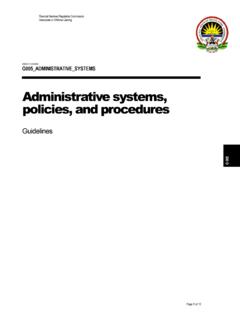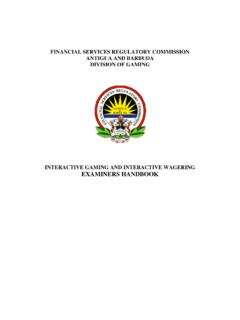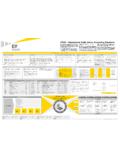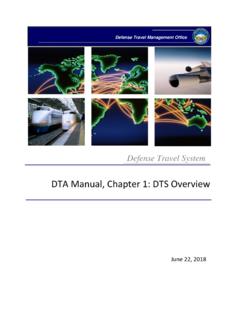Transcription of Accounting and Internal Control Systems for IGIW …
1 Financial Services Regulatory Commission, Antigua and Barbuda November 2005 Internal Control Systems and Maintenance of Accounting and Other Records for Interactive Gaming & Interactive Wagering Corporations (IGIWC) 1 Introduction Section 316 (4) of the International Business Corporations Act (IBC Act) requires the Commission to take any necessary action required to ensure the integrity of the International Business Corporation sector. The International Business Corporations (Prudential Management of Licensed Corporations) Regulations, 2004 - Statutory Instrument No. 9 of 2004- prescribe that a licensed corporation shall carry out its business in a prudent manner in accordance with the industry standards and best practices and any guidelines or directions issued by the Commission.
2 These Regulations require an IGIWC to establish and implement policies, practices and procedures relating to Internal controls including independent Internal or external audit and compliance functions to test the adequacy and effectiveness of these controls as well as applicable laws and regulations. Accordingly, these guidelines are being issued for the guidance and compliance by the corporations licensed to carry on international business under the IBC Act and the Interactive Gaming & Interactive Wagering Regulations. 2 Internal controls Internal Control consists of five interrelated elements: 1. management oversight and the Control culture; 2.
3 Risk recognition and assessment; 3. Control activities and segregation of duties; 4. information and communication; and 5. monitoring activities and correcting deficiencies. The Internal Control Systems should provide reasonable assurance that:- the business is planned and conducted in an orderly and prudent manner; transactions and commitments entered into have proper authority; management is able to safeguard the assets and Control the liabilities of the business; there are measures to minimize the risk of loss from irregularities, fraud and error, and to identify and rectify them when they occur; the Accounting and other records provide complete, accurate and timely information.
4 Management is able to monitor on a regular and timely basis, among other things, the adequacy of the capital, liquidity, profitability and the quality of assets; G3: Guidelines on Internal Control Systems and Maintenance of Accounting and Other Records Financial Services Regulatory Commission, Antigua and Barbuda Division of Gaming - November 2005 2 management is able to identify, regularly assess and, where appropriate, quantify the risk of loss in the conduct of the business so that: (i) the risks can be monitored and controlled on a regular and timely basis; and (ii) appropriate provisions can be made for bad and doubtful debts, and for any other exposures both on and off balance sheet; management is able to comply with regulatory reporting requirements In establishing an Internal Control system management should have regard to the cost of establishing and maintaining a Control procedure in relation to the benefits.
5 It is a responsibility of directors and management to review, monitor and test its Systems of Internal Control on a regular basis in order to assure their effectiveness and continuing relevance to the business. 3 Management oversight and the Control culture The board s role The board of directors should have responsibility for approving and periodically reviewing the overall business strategies and significant policies of the IGIWC; understanding the major risks run by the IGIWC, setting acceptable levels for these risks and ensuring that senior management takes the steps necessary to identify, measure, monitor and Control these risks; approving the organizational structure; and ensuring that senior management is monitoring the effectiveness of the Internal Control system .
6 The board is ultimately responsible for ensuring that an adequate and effective system of Internal controls is established and maintained. Senior Management s role Senior management should have responsibility for implementing strategies and policies approved by the board; developing processes that identify, measure, monitor and Control risks incurred by the IGIWC; maintaining an organizational structure that clearly assigns responsibility, authority and reporting relationships; ensuring that delegated responsibilities are effectively carried out; setting appropriate Internal Control policies; and monitoring the adequacy and effectiveness of the Internal Control system .
7 Control culture The board of directors and senior management are responsible for promoting high ethical and integrity standards, and for establishing a culture within the organization that emphasizes and demonstrates to all levels of personnel the importance of Internal controls. All personnel in the organization need to understand their role in the Internal controls process and be fully engaged in the process. The Control culture encompasses the management style, and corporate culture and values shared by all employees. It includes: (a) the importance which is attached to controls by management; (b) the way in which staff are assessed and rewarded (including remuneration and bonus schemes as well as promotion policies); (c) controls training, and the methods for reviewing Control , including Internal audit.
8 (d) a strong ethical environment, sound personnel policies and Code of Conduct. Controls may be High-level controls which are primarily exercised at director and senior manager level, or the detailed controls, the operation of which is delegated to others. High level controls typically include: (a) the setting of strategy and plans; (b) approval of risk policies; (c) establishment and review of the organizational structure; (d) the system for delegation; (e) review of high level management G3: Guidelines on Internal Control Systems and Maintenance of Accounting and Other Records Financial Services Regulatory Commission, Antigua and Barbuda Division of Gaming - November 2005 3information; (f) maintaining the framework for monitoring and/or periodic review of risk management and detailed Control Systems and for the implementation of action points following such a review.
9 4 Risk Recognition and assessment The board and senior management should establish an effective Internal Control system in which the material risks that could adversely affect the achievement of the organization s goals are recognized and continually assessed. This assessment should cover all risks facing the organization (that is, credit risk, country and transfer risk, market risk, liquidity risk, operational risk, legal risk and reputational risk etc). Senior management should continually evaluate the risks affecting the achievement of its goals and react to changing circumstances and conditions. Internal controls may need to be revised to appropriately address any new or previously uncontrolled risks.
10 5 Control objectives At a minimum each organization should address the following Control objectives:- (a) Organizational structure: including allocation of responsibilities, identifying lines of reporting and delegation of authority and responsibility. (b) Risk management (c) Monitoring procedures (d) Segregation of duties (e) Authorization and approval of all transactions by an appropriate person. (f) Completeness and accuracy of transactions and records (g) Safeguarding assets: The controls should be designed to ensure that access- both direct and indirect access via documentation- to assets or information is limited to authorized personnel. (h) Personnel: Procedures should ensure that personnel have competence and integrity and capabilities commensurate with their responsibilities.







